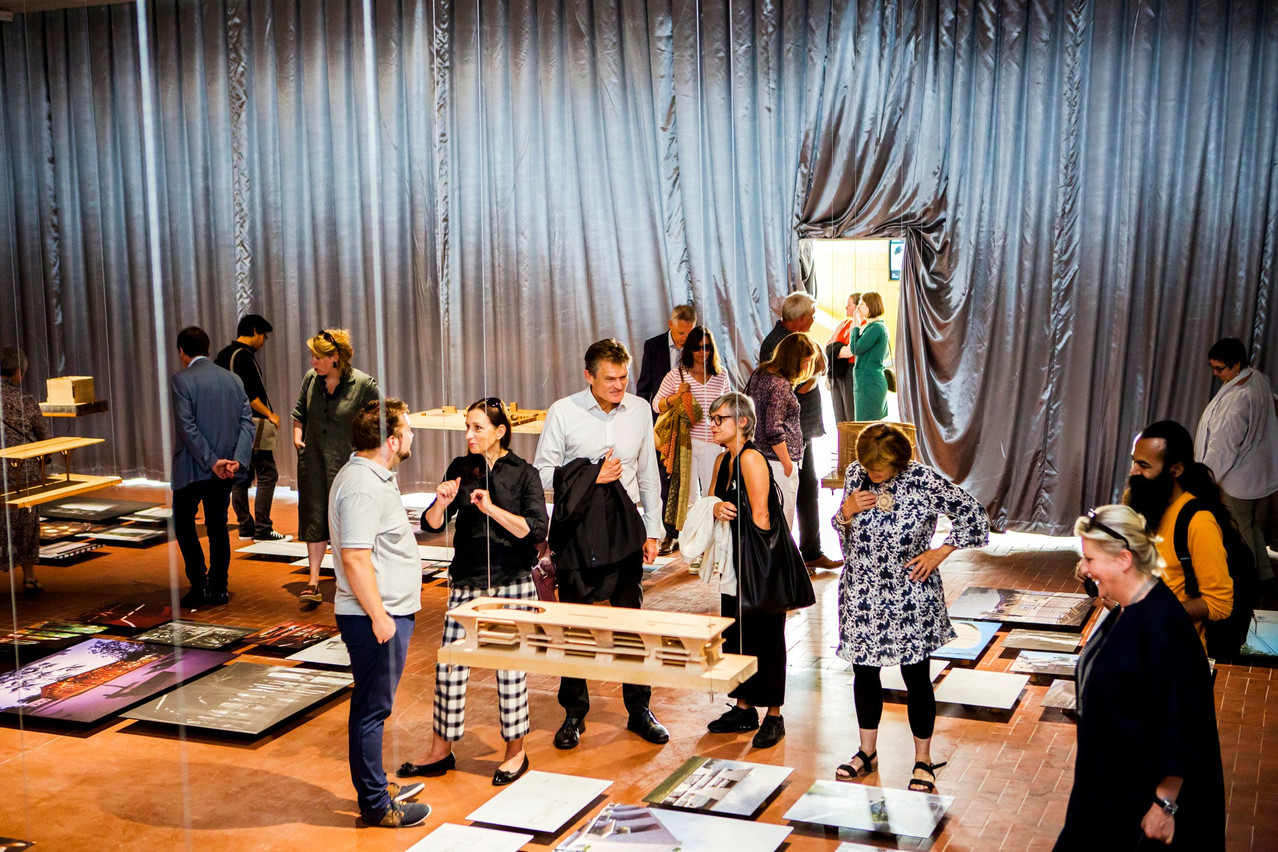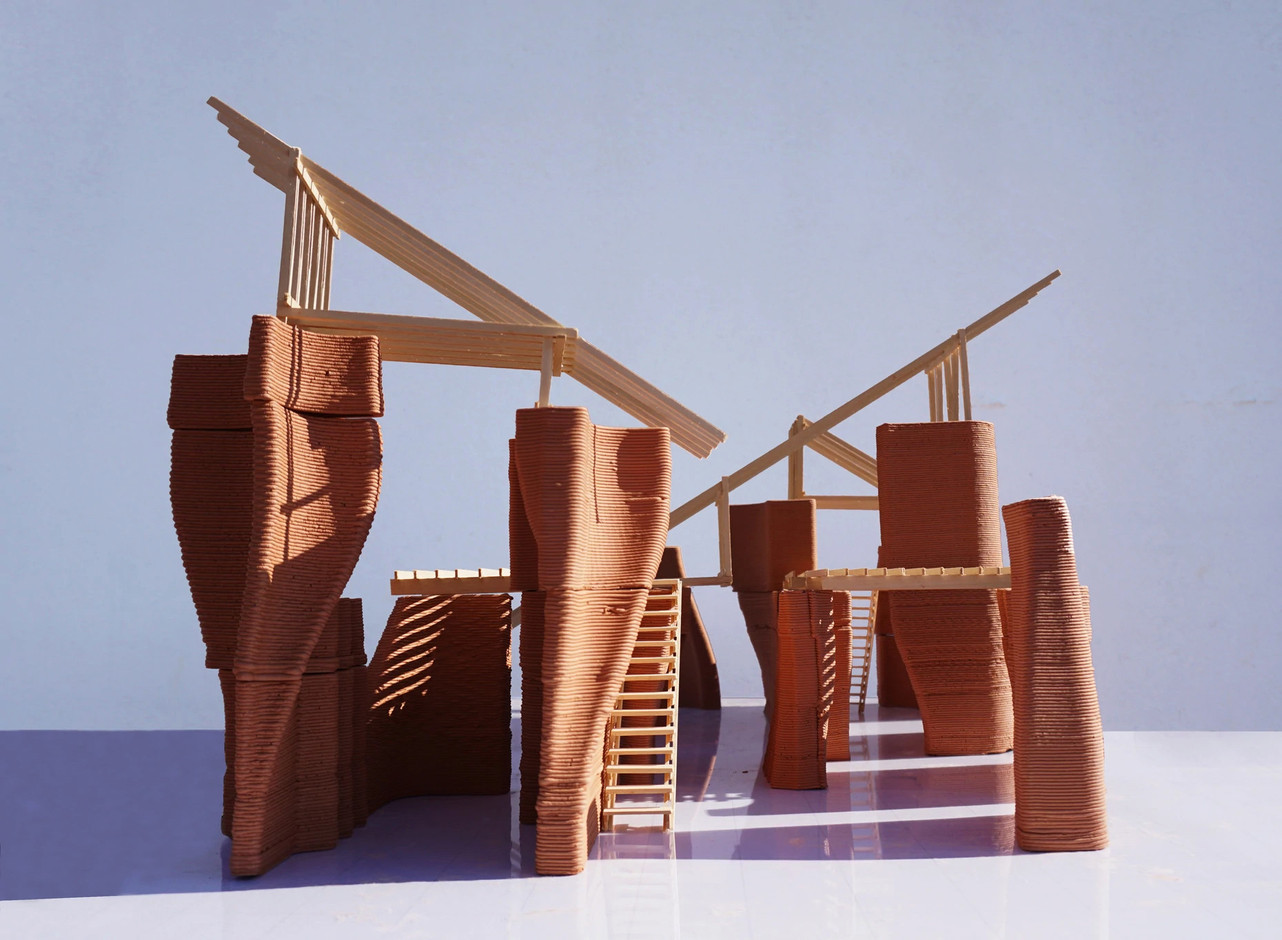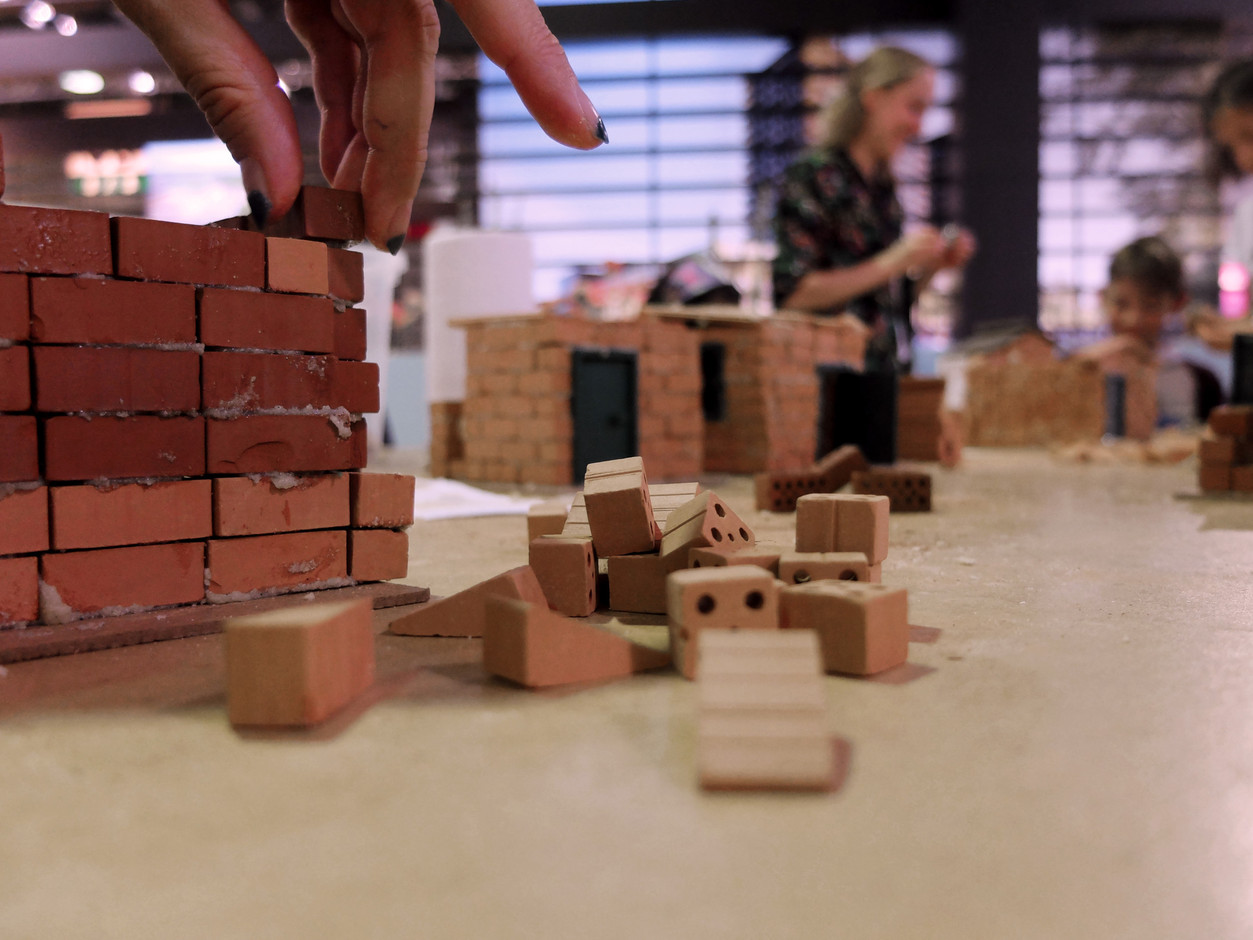Chowdhury’s works are currently exhibited at luca--Luxembourg Center for Architecture free of charge until 11 October, during which Chowdhury will be on site to close the exhibition.
Since the exhibition opening, guests such as culture minister (déi Greng), founder of Friendship Runa Khan, and most recently, the Bangladesh ambassador to Belgium Mahbub Hassan Saleh, have all embarked on a guided tour. Project manager at luca, Giulia Zatti, and chairman of Friendship Luxembourg Marc Elvinger, share more details on the exhibition, Luxembourg’s connection and the closing event in October.
Abigail Okorodus: What is the exhibition about?
Giulia Zatti: With an atmospheric installation, the exhibition “Faraway so close” invites visitors on a journey to Bangladesh and the architectural worlds of Chowdhury-Urbana [name of the architecture studio] from Bangladesh.
Thanks to the careful arrangement of structures in areas marked by extreme climatic conditions, combined with local building techniques and materials, Urbana’s buildings are exemplary of an architecture that serves society with radical simplicity and poetry.
This comprehensive monographic exhibition, about the work of the internationally renowned and award-winning architect Chowdhury, documents more than a dozen buildings and projects by means of models, photographs, film footage, and plans, and provides a kaleidoscopic view of the studio’s design and construction processes.
Is this the first time a building outside of Europe will be displayed at luca? If yes, why this one?
As the national centre for architecture, we are committed to dialogue and exchanges between cultural players on a national, European and international level, with whom we regularly implement collaborative projects.
In February, the first exhibition at luca's new premises in Clausen titled ‘Eise Buedem’, focuses on the question of land as a global and national issue, a selection of 11 international projects from the imaginary history of architecture symbolically liberating the ground were on display.
Moreover, a series of photos of the Friendship Centre of Gaibandha by world-renowned architectural photographer Hélène Binet is currently on display at luca. The photographs, graciously donated by Binet in the context of a prior exhibition at luca in 2014, are now for sale and the proceeds will be destined to both luca and Friendship Luxembourg.
We have seen a warm summer so far compared to the July flooding last year, what lessons can be learnt from this project for future architectural projects in Luxembourg.
Population density, climate change, migration, and the reactivation of rural potential are key issues on a global level, which are becoming more and more relevant in Luxembourg, as well.
The uncompromising quality of Chowdhury’s works is an example of how architecture can achieve social relevance, while thoughtfully and inventively moving us closer to these topical themes, which were once thought to be far away.
What activities are part of the exhibition’s programme ?
To explore and deepen the themes raised by the exhibition, luca organised a framework program ranging from lectures and talks, to educational workshops for kids, teenagers and adults.
Starting from the end of August, on several dates, we invite kids and teenagers to discover Chowdhury's work by making their own creations during ‘Par.Terre.mini’ (ages 6-11) and ‘Par.Terre.maxi’ (ages 12-18). The workshop for 16+ ‘3D printed performative clay wall’ in collaboration with Äerd Lab will take place on 8 October.
On 8 and 9 September, luca and non-governmental organisation Astm--Citim have invited architect Alia Bengana for two public meetings devoted to the role of concrete in construction, its social and environmental consequences, and its alternatives, followed by the talk ‘Materials for a better architecture’ (in collaboration with Neobuild) in October, and the crowning lecture of this exhibition given by Chowdhury during the closing.
Friendship Luxembourg
How is Friendship Luxembourg involved in this exhibition?
Marc Elvinger: I saw the exhibition first at Aedes Architecture Forum in Berlin where I went to its opening in January 2019, knowing Chowdhury since many years because he did a number of important projects with Friendship in Bangladesh. Considering that out of thirteen works shown in the exhibition, five have Friendship as the project owner and that most of these had been largely funded from Luxembourg, I felt that we should bring the exhibition to Luxembourg and I thus naturally approached luca for a collaboration. The opening was initially planned for March 2020. Then came covid …
How is Luxembourg connected to the RIBA awarded Friendship Hospital Shyamnagar which is among the exhibits?
Friendship Hospital Shyamnagar, which received the RIBA International Award 2019, was built in the aftermath of Cyclone Sidr which struck the coastal belt of Bangladesh very badly in November 2007 and was largely funded by Friendship Luxembourg with support from the Luxembourg Government and private donors. The same applies to some of the other projects shown in the exhibition. In particular, the Friendship Center, a training centre built in the North of Bangladesh (district of Gaibandha) and which was awarded the Agha Khan Award for Architecture back in 2016 was as well to a very large extent funded from Luxembourg. Just as the Friendship Cyclone Shelter in Kuakata which was nominated for the Zumtobel Group Award in 2021.
The ambassador of Bangladesh to Belgium visited about a week ago, what were the key takeaways from that encounter?
I think it was good for the Ambassador and his delegation to see that we do not primarily look at Bangladesh as a “poor” country but that we bring the creativity of one of its most renowned architects to the attention of our people here. And that we use this as an opportunity to communicate positively on what Bangladesh can offer. As I had the opportunity to stress at the opening of the exhibition in June, to me “Chowdhury’s architecture pays tribute and honours the tremendous strength of these Bangladeshis--especially the dignified and beautiful women who struggle every day to feed their children in incredibly difficult contexts--and it is one of the factors that allows us to keep our primary commitment: that of allowing them to develop their full potential by bringing them Dignity and Hope!”. Beyond the particular case of Bangladesh and the work of Friendship, what we are communicating is that, as Runa Khan, the Founder of Friendship likes to say, “the poor cannot afford poor solutions”.
You mentioned Chowdhury will be a speaker at the closing event, can you provide more details about the closing event on 11 October?
Indeed, whereas Chowdhury could not attend the opening in June, he will come to Luxembourg for the closing in October and, on this occasion, give a lecture about his work and the way he envisages the same in the context of the particular environment and needs of Bangladesh. Having heard Chowdhury speak in the past, I know it’s not an opportunity one should miss. Because to me, in addition to being a brilliant architect and a very good photographer, Chowdhury is a poet when he speaks about the environment and the landscapes of his county, the Bay of Bengal.
The closing will take place on Tuesday 11 October at 18:30 at luca’s address: 1, rue de la Tour Jacob in Clausen. The exhibition was curated by architects Niklaus Graber, who is also the co-founder of Graber and Steiger Architects in Lucerne, and Andreas Ruby, director of the Swiss Architecture Museum.
Find out more about the exhibition .




